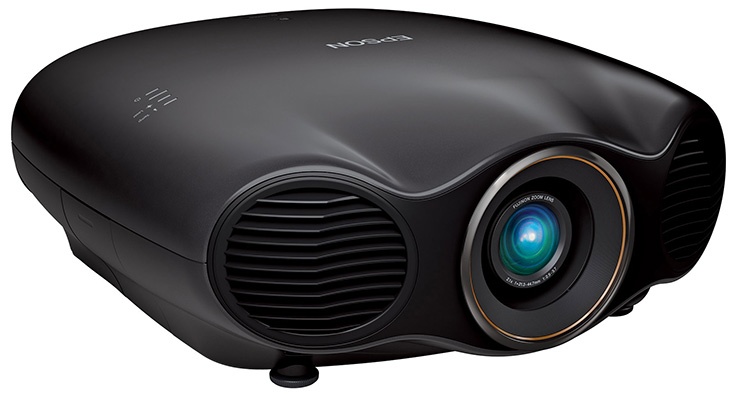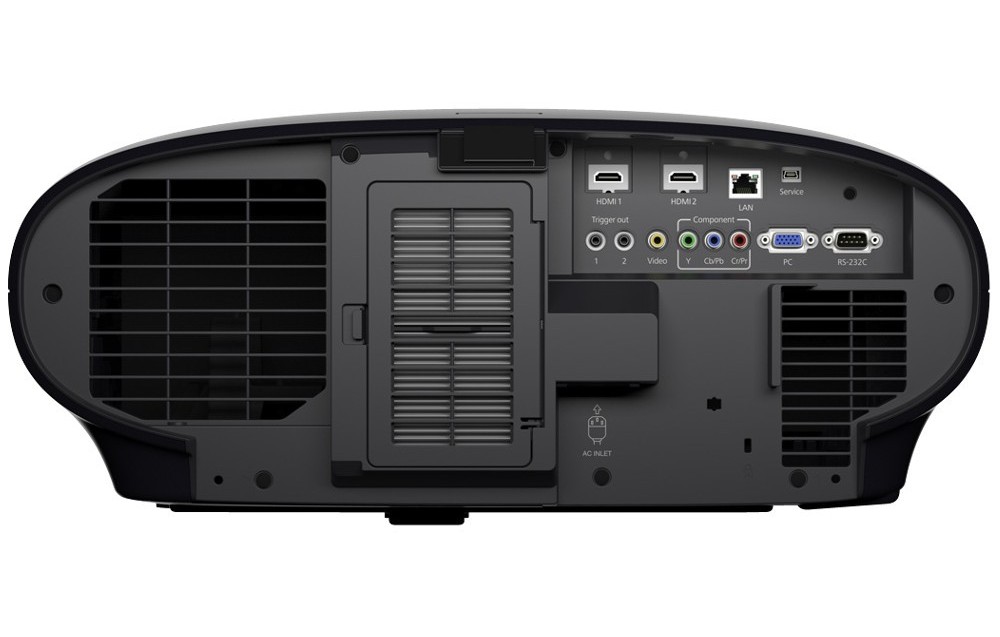Unleashing the Laser
Article by Dick Tan

First introduced to Malaysian videophiles at the KL International AV Show 2015 last July, Epson’s flagship home theatre projector the LS10000 is now readily available to those who are looking for the ultimate in ‘big picture’ performance that only projectors can provide.
Having written, albeit briefly, on the LS10000 and its many features along these pages we will not repeat the more common ones. Perhaps unavoidable and worth mentioning are the key features that makes the LS10000 unique. Large for a modern digital imaging device the LS10000, is massive, measuring at least 22” wide and weighs a hefty 40lbs. It is also pretty impressive aesthetically.
However, within this large enclosure lies its ‘heart’, a dual light laser light source that drives Epson’s proprietary 3LCD Reflective imaging device. As its name implies the LCD chip in the LS10000 reflects, instead of transmitting nascent Liquid Crystal Display images. It is an LCD variant that Epson maintains help give the LS10000 the extra edge in black level, colour integrity and visual detail.
As regards its light source, the LS10000 is perhaps the first true mass production high performance home theatre projector to use laser light instead of the traditional lamp.

While it is true that there have been the odd manufacturer that have attempted to do so, most proved to be too anaemic in the amount of light they were able to produce, struggling to generate at the best, no more than 600 Lumens tops.
The dual laser light source according to Epson is capable of producing at least 1500 lumens of light, more than enough to drive a 150” diagonal width 16.9 screen at a 15ft throw distance. A smaller screen of say between 100” – 120” at a shorter distance will produce an even brighter picture.
More importantly to videophiles, where such matter is important, the laser light source on the LS10000, unlike traditional lamps, needs no replacement. It can, at the energy saving ECO mode last at least 30,000 hours or 17,000 hours at full high power mode.
An equally important factor is that the laser light source is able to maintain this level of light output with hardly any or no degradation of the quality of the light output.
The light output from a lamp-based projector will on the other hand deteriorate steadily within its estimated 3,000-hour life span.
In addition to the features unique to it the LS10000 also compete favourably with its contemporaries from Sony and JVC, the only other projector manufacturers apart from Epson that currently offer some means of displaying 4K or at least a pseudo form of 4K projection.
Setting up the LS10000, inspite of its intimidating size is a breeze once you have determined its proper placement. In our instance, the LS10000 was set up to fire onto a 120” wide StewartFilmScreen 2.35.1 CinemaScope wide screen.
So, if you are a movie buff all your 2.35.1 aspect ratio Blu-ray movies, with the appropriate stretch mode option properly set up in the LS10000, will fully fill the screen. The effect, if you have not seen one is bound to impress.
However, with narrower 1.78.1 (16.9) aspect ratio movies the picture will occupy the centre portion of the 2.35.1 screen, leaving sidebars on the left and right of the screen. Most serious movie buffs we know will readily pick the 2.35.1 option. You may also want to consider the fact that most epic widescreen movies are originally shot at the wider 2.35.1 aspect ratios.
But if sidebars on a 1.78.1 (16.9) shaped movie bothers you and you prefer the option of watching 2.35.1 shaped movies with top and bottom black bars, a 16.9 screen may be a better screen option. The good news is the LS10000 allows you both options.
The laser light source, though not as bright as some of Epson’s own lamp based projectors is more than bright enough in a room where the ambient light can be controlled to a certain degree.
In an appropriately darkened room, the ECO mode should provide more than ample light drive. We opted to use the full power mode for the extra light that gives most movies an extra degree of colour and detail pop.
Yes, that will reduce the laser source lifespan to about half at 17,000 hours but that is still a lot of light life, typically 5 ½ times longer than lamp based light source! Even if you were to watch 2 movies of approximately 4 hours a day, the laser light source will still laser over 7 years!
We prefer operating the LS10000 at full power for that extra visual pop anytime.
After a spell of tweaking the various picture management pre-sets on the LS10000 the best picture was achieved with the picture mode settings at Cinema, Laser light output at Full Power and most other settings either switched off or neutralized. Best 4K upscaling on the LS10000 was achieved with the Detail Enhancement setting at 2. Dynamic Contrast, a control that supposedly improves black level was switched off.
Picture quality using mainly Blu-ray sources was exemplary either in its native 1080p resolution setting or scaled to 4K with subtle differences in detail and sharpness.
On both resolution settings, the colour palette was superbly produced with a natural and organic look to it. And the depth of the picture is quite simply outstanding.
At a recommended retail price of RM30, 500 the LS10000 is obviously targeted at the high-end, high performance segment of the home projector market.
Inspite of its high-ish price this Epson flagship projector has two winning technologies going strongly for it. Its long life laser light system and its outstanding visual performance. To be sure, there are other projectors out there that may cost more but it is doubtful that any will offer the groundbreaking visual technologies that reside within the LS10000. There advanced technologies will in our opinion, give the LS10000 an almost unfair advantage over its competitors.
For further details contact:
Epson (M) Sdn Bhd.
Tel: 03-56288288
Article by Dick Tan

dick’s reply:
Hello again Antonio
From your description you appear to be experiencing problems associated to de-interlacing and scaling.
All video signals before they are displayed on a digital screen (your projector is a digital display device) needs to be in a progressive state (if they are not, i.e. if they are in an interlace stage they would be required to be de-interlaced).
The most common way to do this would be at the programme stage i.e. in this case, with the BD players. When a digital display, in your case, the Acer projector receives such a signal the signal is displayed without further de-interlacing Check the settings in your BD player. Ensure the video output is set to progressive.
That should dramatically reduce the ‘jaggies’ and noise that you are complaining of.
Similar problems can also arise when scaling video signals. Set the resolution output of your BD player to its native resolution which should be 1080p. As your projector’s active resolution is also 1080p it is a perfect match to your BD player. As such no scaling is required.
Generally, the less scaling the lesser the artifacts produced.
Of course de-interlacing and scaling can also be done at the display stage.
Experiment between the source (BD players) and the display to see which gives you the better result.
One more question from antonio from portugal:
Thank you so much for the great detailed information and valuable help! 🙂
I’m really trying to get the best as possible from my DVD collection! So that’s the reason for my search 🙂
I had before a Samsung F7500, and was not satisfied with the picture, a bit noisy, so I tried the Oppo 83, unfortunately with PAL Dvds (most of my dvds), subtitles and menus appeared “broken” (interlaced)… Then I tried the S790 which is better than the F7500 in terms of picture and looked the same for me when compared to the Oppo 83… Then I tried the Panasonic DMP570 (which has the same core of the DMP700), and was also disappointed, the image has jaggies and looked also picture noisy, something that the Sony S790 did not have… So I returned the Panasonic…
So at the moment I was thinking about the Pioneer BDP LX58 or the Oppo 103, also read about the Denon 3313 or the Marantz U7007… but when I compared the prices the Pioneer has really a good price! 🙂
I’m very happy for your help and important advice on the Pioneers LX58 and LX88 (unfortunately the LX88 too expensive for my budget and I also think it won’t fit on my shelf! :P) For me even 500€ is a big investment, my biggest one (a bit more than 500€) was with the 1080p projector (Acer H6510BD), so it is a budget home cinema 🙂
Another question:
About the Sony S7200 vs my S790? Are they similar on Dvd Playback on my 118″ screen?
antonio
And this is dick tan’s reply:
Hi Antonio
I take it that your reference to DVD is actually BluRay? If it is DVD then you are seriously handicapped here, especially if you are projecting the 480p (DVD) resolution into a huge 118” screen.
The Sony 5790 3D player is a little outdated though it is packed to the gills with useable features. Its performance is decent though it can be improved upon. If you are planning on an upgrade both the Oppo BDP 103 (assume the model you are referring to is the 103D) and the Pioneer BDP LX-58 are great options.
The Pioneer BDP-LX58 is a superbly well built machine but so is the Oppo BDP-103D. Strangely here in Malaysia the BDP-LX58 is a little more expensive then the BDP-103D so the choice is really up to one’s personal preference on picture and sound. But on another level, if you are really looking for a machine that will make a true difference you should seriously consider Pioneer’s flagship model the truly stupendous BDP-LX88. It competes directly with Oppo’s BDP-105D. Here the Pioneer BDP-LX88 pips the Oppo 105D in areas of built, picture and sound quality but it cost more than twice the price of the Oppo. To be fair though the Oppo BDP-105D’s performance is no slouch either.
I hope I have not ended up confusing you even more Antonio. In a nutshell if the Pioneer BDP-LX58 is going to save you 300 Euros over the Oppo BDP-103D, go for the Pioneer. It is hard to argue with a 300 Euro saving !
AV2day.com received this query from portugal:
Antonio
Hello,
I’d like an expert advice from you, if possible 🙂
I have a collection of DVDs and want to get the most out of it, I’m projecting on a 118″ screen with a 1080p Projector.
At the moment I have the Sony S790, which is better than my Samsung F7500… In terms of DVD playback…
I’ve been thinking about the Pioneer BDP LX-58 is it better than the Oppo for my Dvd playback? 🙂 I ask this because here I can get it for 500€ but the Oppo is 800 here in Portugal… And I’ve read great things about the Pioneer when it comes to residual noise, picture and sound too! That out of the box is better than the Oppo 103? I mean in terms of Picture, sound and residual noise? Is this true?
Will this Pioneer be the ultimate choice for DVD playback? Or are better players out there?
Thank You Very Much
Warm Regards from Portugal
António